|
 TEMPERATURE LOGGING BASICS
TEMPERATURE LOGGING BASICS
 Temperature logging began around 1846
when William Thomson (Lord Kelvin) made measurements of
temperature in water wells in England. His first technical paper
on the subject was "Age of the Earth and its Limitations as
Determined by the Distribution and Measurement of Heat within
It". Kelvin's calculated age was 20 - 40 million years.
Since radioactivity had not
been discovered yet, Kelvin was unaware of the heat generated
internally from this source, so he can be excused for a
100-fold error in his estimate of the Earth's age. Controversy,
debate, and a slew of additional papers ensued for another 50
years. Temperature logging began around 1846
when William Thomson (Lord Kelvin) made measurements of
temperature in water wells in England. His first technical paper
on the subject was "Age of the Earth and its Limitations as
Determined by the Distribution and Measurement of Heat within
It". Kelvin's calculated age was 20 - 40 million years.
Since radioactivity had not
been discovered yet, Kelvin was unaware of the heat generated
internally from this source, so he can be excused for a
100-fold error in his estimate of the Earth's age. Controversy,
debate, and a slew of additional papers ensued for another 50
years.
The first wireline temperature log was run in 1933. Many
modern logging tools have a temperature sensor built-in, so
a separate device is not always needed. These are not highly
accurate but sufficient for most petrophysical analysis
models. High resolution and rapid response temperature logs
are needed for some reservoir engineering tasks, such as
gas leak and crossflow detection.
The
temperature sensor is
a thermistor exposed to the borehole fluid. A
platinum element is usually used, as the electrical
resistance varies linearly with temperature over a wide
range and is stable over time.
According to PetroWiki, "The
temperature tool is most effective when located at the
bottom of a tool string. In a production well, the tool
should always be logged downward so as to enter undisturbed
fluid. The log should be recorded at a constant logging
speed, not to exceed 30 ft/min."
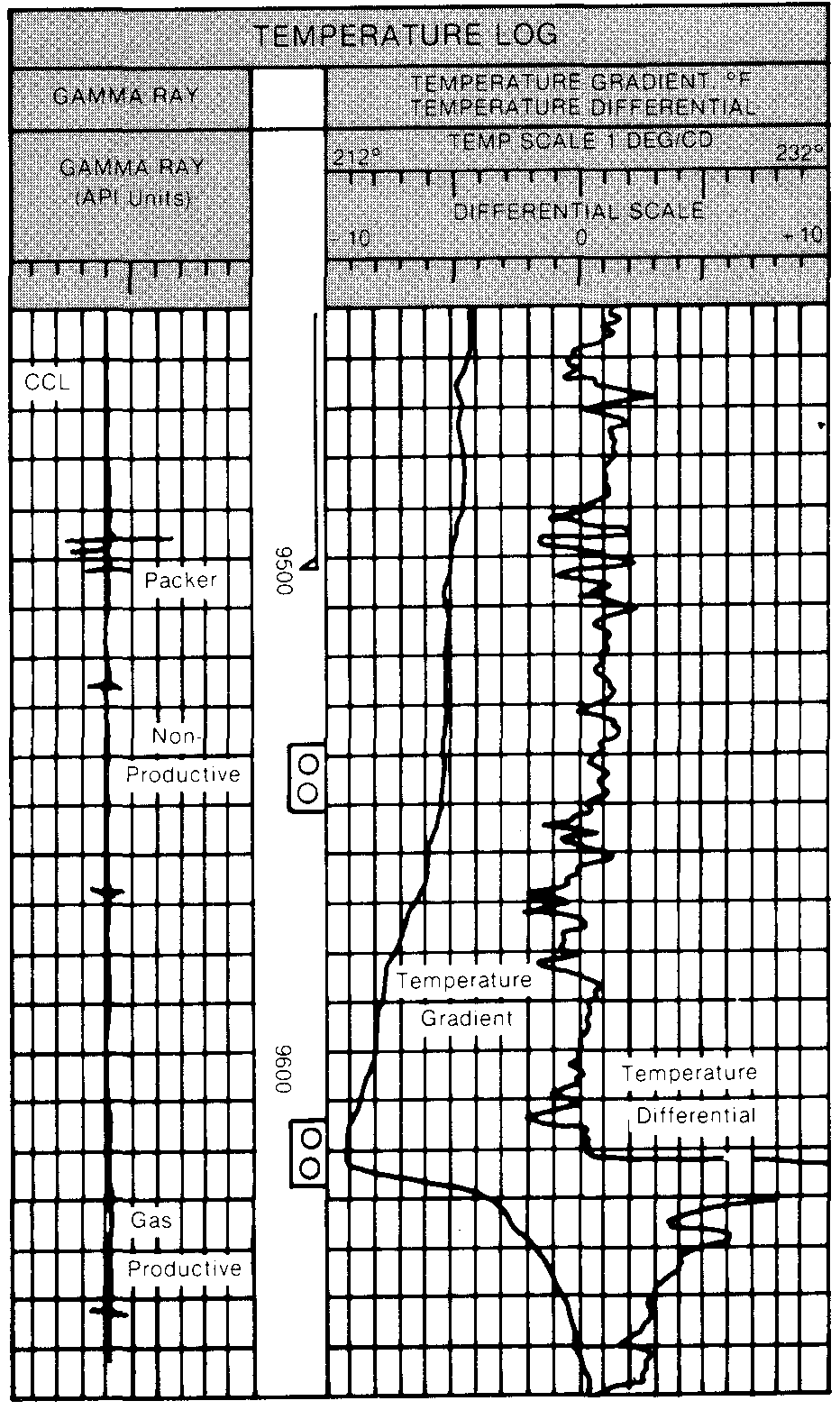
Typical temperature log in a flowing gas well shows
cooling at the perforations due to gas expansion into the
casing, and a very slight warming as the gas enters the
tubing. The log returns to geothermal gradient below the
perfs. A derivative curve helps locate small changes in
temperature. A casing collar locator (CCL) is shown in Track
1 for depth control - a gamma ray curve is often displayed
as well.
 APPLICATIONS OF TEMPERATURE LOGS
APPLICATIONS OF TEMPERATURE LOGS
Temperature logs are used to establish local and regional
formation temperature, temperature gradients in oil, gas,
and geothermal wells, and gas inflow in open and cased hole,
Other applications are (or were) location of cement top
after setting casing, assessment of perforation efficiency
in production and injection wells, as well as detection of
crossflows and gas flows behind casing.
The temperature log is an integral part of all production
logging operations as it is essential in assessing
multi-phase flow rates, especially in deviated and
horizontal wells.
They have been widely used to assess completions
in producing and injection wells. Here are two examples.
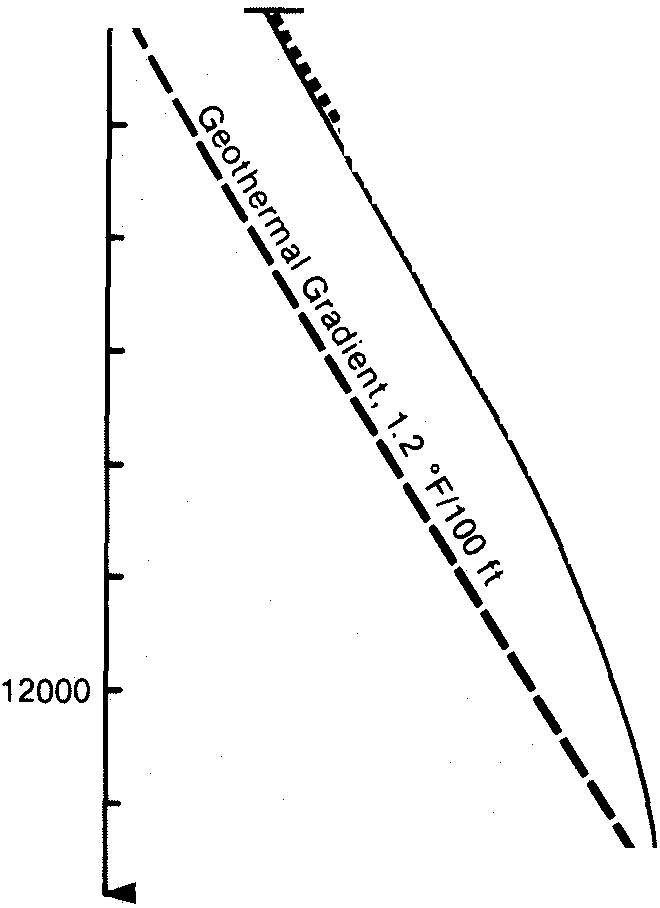
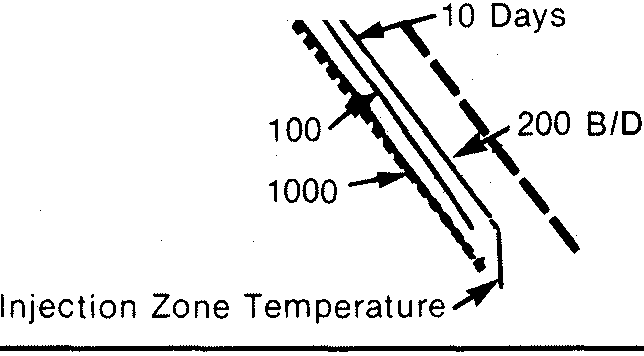
Temperature logs in oil production well (left) and water
injection well (right). Production carries heat uphole so log
is above but parallel to geothermal gradient curve.
Injection carries cooler temperatures downhole so log is
below geothermal gradient curve. The amount of heating or
cooling depends on flow rate and specific heat of the
produced or injected fluid. In both cases, the log merges
with the geothermal gradient curve below the perfs. If a
well is shut in, it gradually returns to the local formation
temperature. (Images courtesy Western Atlas)
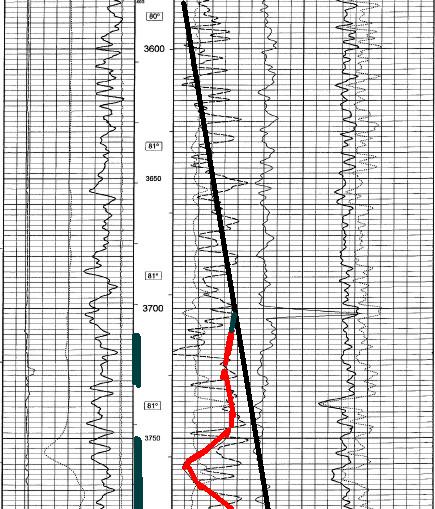
The
"forgotten" log, the temperature survey in
open hole, might be
useful if some gas has evolved into the wellbore
prior to logging. There is a temperature sensor on
most modern logging tool strings - just ask for it to be
displayed.
<== Temperature log recorded with density neutron log. ln open hole over a gas shale shows cooling (highlighted in
red) due to gas
inflow. Vertical black bar indicates interval to be
completed.
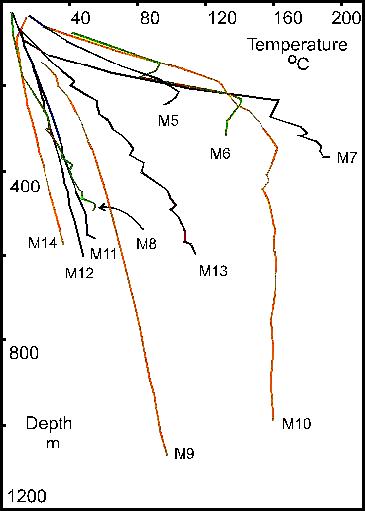 Temperature
logs in geothermal wells are essential for both exploration and
development. Temperature
logs in geothermal wells are essential for both exploration and
development.
Temperature logs from a Canadian geothermal prospect in the Rocky
Mountains of BC show that some exploration wells do not reach
geothermal criteria. (GSC image) ==>
 Back
in
the “good old days” before the invention of sonic
logs, there was no genuine cement integrity log. However, the
location of the cement top was often required, either to satisfy
regulations or for general knowledge. Since cement gives off heat
as it cures, the temperature log was used to provide evidence
that the well was actually cemented to a level that met expectations. Back
in
the “good old days” before the invention of sonic
logs, there was no genuine cement integrity log. However, the
location of the cement top was often required, either to satisfy
regulations or for general knowledge. Since cement gives off heat
as it cures, the temperature log was used to provide evidence
that the well was actually cemented to a level that met expectations.
<== In this example, the top of cement is located
where the temperature returns to geothermal gradient. The log
must be run during the cement curing period as the temperature
anomaly will fade with time.
|

